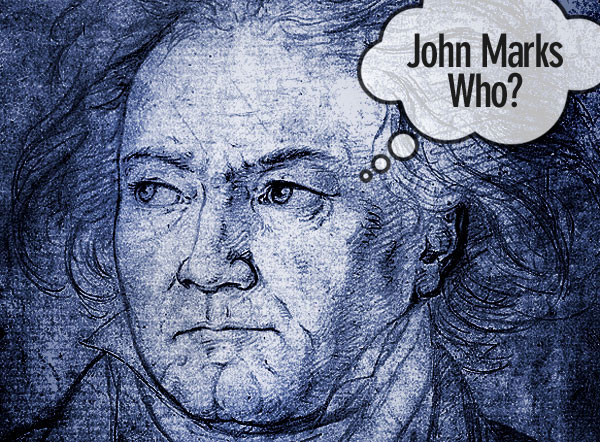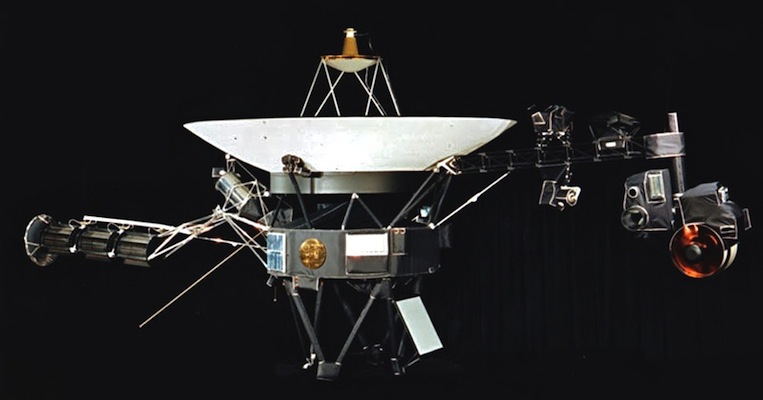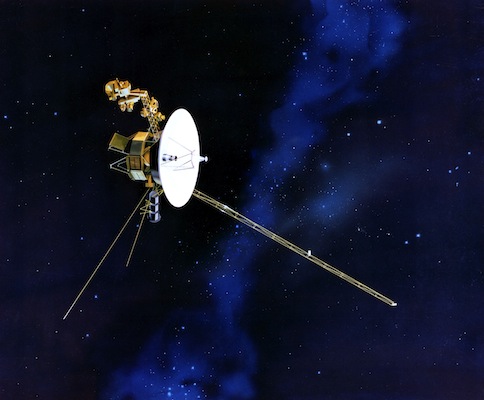
Month: April 2020
CLPS 0500 Perception and Mind, John Marks Guest Lectures Further Reading, etc. (5)
 Courtesy Stereophile magazine.
Courtesy Stereophile magazine.
If anyone is interested, here are more groovy things to explore. Feel free to consider this your Suggested Voluntary Summer Reading and Listening List.
In 1965, the Soviet composers Dmitri Shostakovich and Rodion Shchedrin were both vacationing in Armenia. Shostakovich asked Shchedrin the Desert Island Score question: Were Shchedrin to be exiled to a deserted island and could bring only one score with him, which would it be? Shchedrin’s answer was prompt: J.S. Bach’s Die Kunst der Fuge (The Art of the Fugue).
When Shchedrin then turned the question on him, Shostakovich answered, “Das Lied von der Erde, by Mahler.” (Tr.: The Song of the Earth.) Which is not surprising, given that Shostakovich was a founding member (one of two, if I recall correctly) of the Gustav Mahler Society of the Soviet Union, and that Shostakovich later entertained (but decided against) the idea of completing the orchestration of Mahler’s unfinished Symphony 10. (BTW, the only books in Mahler’s composing hut were Johann Nikolaus Forkel’s major survey of Bach’s works.)
The same topic arose in another conversation that took place between Shostakovich and Shchedrin in 1975, two months before Shostakovich died (so I assume that they were in Moscow). Shchedrin asked, “Do you remember our conversation in Armenia? Did you change your opinion about Mahler?” “No,” Shostakovich replied. “And did you change your opinion about Bach?” To which Shchedrin answered, “No.” Continue Reading →
CLPS 0500 Perception and Mind, John Marks Guest Lecture Preparation (4)
 The Voyager, showing the container for the Golden Records.
The Voyager, showing the container for the Golden Records.
Almost on a whim, more than 40 years ago, a bunch of scientists decided that seeing as we were launching two robotic probe vehicles which, once they left our solar system, would drift in space for about 40,000 years before getting close to another planetary system, we might as well send along a couple of phonograph records containing, among other things, a wide variety of pieces of music from Earth.
The amazing things about that are legion; but the two that stick out farthest for me are that (1) the aforementioned scientists actually convinced otherwise sane and sober bureaucrats to go for it; and (2) the aforementioned scientists were able, in a rather short time frame, to kludge together bits and pieces that, in theory at least, might, 40,000+ years from now, enable The Good Lord Knows Who? to play the aforementioned phonograph records. Which are known to that segment of humankind that cares about such things as “The Voyager Golden Records.” (And not all such persons have closets full of Star Trek Original Television Series uniforms. Or so I have been assured.)
Obviously, bundling up for long-distance shipment a state-of-the-art-for-1977 phonograph turntable, tone arm, cartridge, amplifier, and speakers or headphones was out of the question. How the Voyager Golden Records team attempted to finesse that difficulty, as well as information on the music tracks, comes after the jump.
CLPS 0500 Perception and Mind, John Marks Guest Lecture Preparation (3)
 Artist’s conception courtesy NASA JPL.
Artist’s conception courtesy NASA JPL.
The above image is of a Voyager space probe. There is a fascinating connection between the Voyager program and Cultural Literacy in Music, and we will get to that soon.
But because my guest lectures will be Zoomed, I am concerned that if I sing or play musical examples, they might not come through well enough. Therefore, I want first to get some of the “Wires and Pliers” aspects of the physics of sound and music out of the way via uploads that you can look at and listen to. Here goes:
When I was a boy singer (I was a boy soprano, in fact) I had a music teacher who used to tell the story of a young musician or composer of the classical era (by which I mean circa 1775) who used to come home late after a night of carousing, and torment his musician or composer father (who was already in bed upstairs) by loudly playing all but the last note of a major-key octave scale. Continue Reading →
CLPS 0500 Perception and Mind, John Marks Guest Lecture Preparation (2)
If you had been wondering why I asked you to watch a live music video of Jamiroquai’s 1999 funk/dance song “Canned Heat,” the answer is found in the audio-only YouTube clip immediately above, a remastering of the original “Canned Heat Blues” from 1928.
In the US between 1920 and 1933, the sale of alcoholic beverages was banned. People who could not afford to pay the prices demanded by bootleggers for alcohol that was illegal (but which was intended for human consumption, and therefore as safe as the alcohol that previously had been legal) sometimes drank wood alcohol, which could easily blind you, and over the course of time, would kill you. Squeezing the alcohol out of jellied cooking fuel and drinking it surely would give you the “Canned Heat Blues.” This performance is quite a harrowing document. More information, including lyrics, here and here. Continue Reading →
Ella Fitzgerald: Always True to You (In My Fashion) (Cole Porter)
An obscure poem by the English Decadent poet Ernest Dowson provided the title for a famous novel (and its classic film version) as well as a punchy line from one of Cole Porter’s most innuendo-laden show tunes. The backstory is long but fascinating, so please bear with me. And there will be a little surprise for you at the end.
The above audio is from the 1956 Norman Granz sessions for Ella Fitzgerald Sings the Cole Porter Songbook. Much more after the jump. Continue Reading →
Yatabe “Track” Day (Japanese Jazz/Fusion Mix Vol.2)
Courtesy of Renaissance Man (and credentialed amateur opera singer) Jack Baruth (who was pointed to this by the estimable Sajeev Mehta), we have a “mix tape” of Japanese Jazz/Fusion music. Which I decided to let my readers know about because… times are tough, and we all need a little undemanding escapism. Rilly.
(Yeah, the YT title and header image include a lame pun: “track” as in auto-race track vs. track as in recorded music track. OK, I get it.
Not to over-share, but the most memorably difficult St. Valentine’s Day date ever, at least in my personal history, was when I asked a lovely young lady to accompany me to the symphony, myself having only glanced at the program. Continue Reading →


